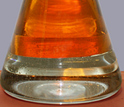You have requested to receive a Daily Digest e-mail from National Science Foundation Update.
Message: 1
From: National Science Foundation Update <nsf-update@xxxxxxx>
Date: Thu, 18 Sep 2008 10:06:08 -0500 (CDT)
Subject: Draft Cooperative Agreement for the Recompetition of NEES Operations
Draft Cooperative Agreement for the Recompetition of NEES Operations
Available Formats:
PDF: http://www.nsf.gov/pubs/2008/nsf08074/nsf08074.pdf?govDel=USNSF_25
Document Number: nsf08074
This is an NSF Program Announcements and Information item.
Message: 2
From: National Science Foundation Update <nsf-update@xxxxxxx>
Date: Thu, 18 Sep 2008 10:08:45 -0500 (CDT)
Subject: Doppler on Wheels Deployed at Hurricane Ike
Doppler on Wheels Deployed at Hurricane Ike

The only scientific team to successfully brave Hurricane Ike's knock-down winds and swells in Galveston was the DOW, the Doppler on Wheels mobile weather radar operated by the Center for Severe Weather Research (CSWR) in Boulder, Colo.
"The DOW mission to Ike provided, for the first time, high-resolution radar data collected from the ground of the inside of a hurricane eye strengthening during landfall, and from a hurricane that directly impacted a large urban area," said ...
This is an NSF News item.
Message: 3
From: National Science Foundation Update <nsf-update@xxxxxxx>
Date: Thu, 18 Sep 2008 16:01:09 -0500 (CDT)
Subject: From Sugar to Gasoline

Following independent paths of investigation, two research teams are announcing this month that they have successfully converted sugar-potentially derived from agricultural waste and non-food plants-into gasoline, diesel, jet fuel and a range of other valuable chemicals.
Chemical engineer Randy Cortright and his colleagues at Virent Energy Systems of Madison, Wisc., a National Science Foundation (NSF) Small Business Innovation Research awardee, and researchers led by NSF-supported ...
This is an NSF News item.
Message: 4
From: National Science Foundation Update <nsf-update@xxxxxxx>
Date: Thu, 18 Sep 2008 16:28:40 -0500 (CDT)
Subject: NSF, NIH Award Ecology of Infectious Disease Grants
NSF, NIH Award Ecology of Infectious Disease Grants

Unprecedented changes in biodiversity have coincided with the emergence and re-emergence of infectious diseases around the world.
To address this problem, the National Science Foundation (NSF) and the National Institutes of Health (NIH) have announced $16 million in funding for eight projects under the Ecology of Infectious Diseases (EID) program, a multi-year, joint-agency effort now in its ninth year of funding.
"In a time of rapid global change, the one certainty is that ...
This is an NSF News item.
Message: 5
From: National Science Foundation Update <nsf-update@xxxxxxx>
Date: Thu, 18 Sep 2008 16:30:42 -0500 (CDT)
Subject: Some Political Views May be Related to Physiology
Some Political Views May be Related to Physiology

People who react more strongly to bumps in the night, spiders on a human body or the sight of a shell-shocked victim are more likely to support public policies that emphasize protecting society over preserving individual privacy. That's the conclusion of a recent study by researchers at the University of Nebraska-Lincoln (UNL). Their research results appear in the Sept. 19 issue of Science magazine.
The study, funded by the National Science Foundation (NSF), tested 46 people ...
This is an NSF News item.
Message: 6
From: National Science Foundation Update <nsf-update@xxxxxxx>
Date: Thu, 18 Sep 2008 16:34:30 -0500 (CDT)
Subject: Walnut Trees Emit Aspirin-Like Chemical to Deal With Stress
Walnut Trees Emit Aspirin-Like Chemical to Deal With Stress

Walnut trees respond to stress by producing significant amounts of a chemical form of aspirin, scientists have discovered.
The finding, by scientists at the National Center for Atmospheric Research (NCAR) in Boulder, Colo., opens up new avenues of research into the behavior of plants and their impacts on air quality, and also has the potential to give farmers an early warning signal about crops that are failing.
"Unlike humans, who are advised to take aspirin as a fever ...
This is an NSF News item.
This e-mail update was generated automatically based on your subscription to the categories listed for each item. Some updates may belong to more than one category, resulting in duplicate notices.
You can adjust your National Science Foundation Update subscriptions or delivery preference at any time on your Subscriber Preferences Page. You can also change your e-mail address, or stop subscriptions on this page. You will need to use your e-mail address to log in. If you have questions or problems with the National Science Foundation updates, please contact support@xxxxxxxxxxxxxxx.
National Science Foundation · 4201 Wilson Boulevard · Arlington, VA 22230 · 703-292-5111
